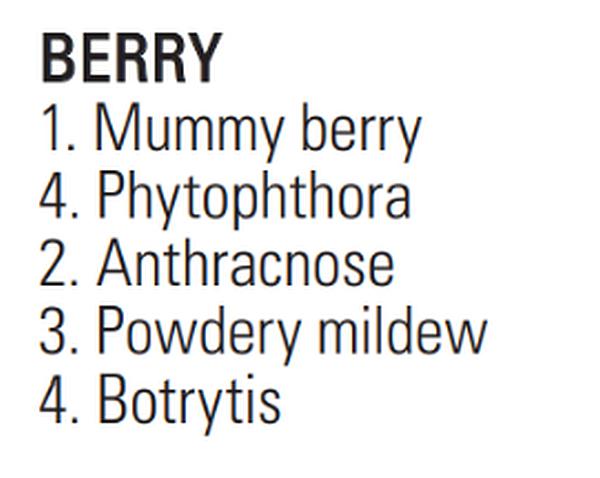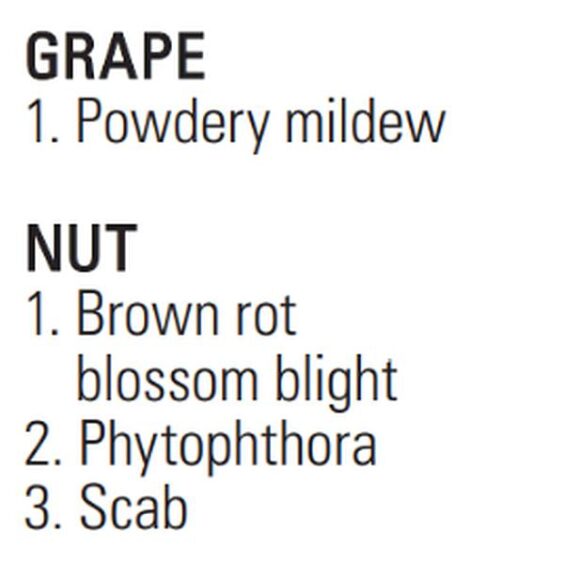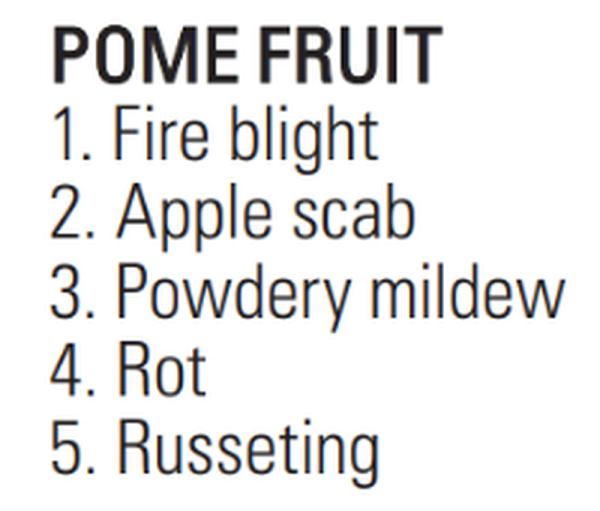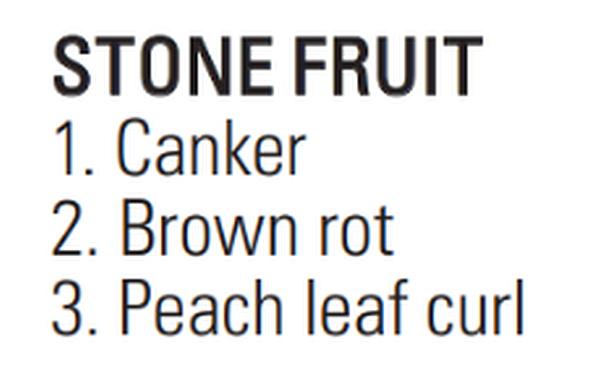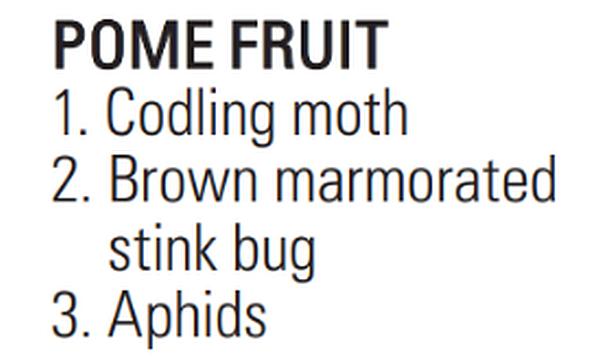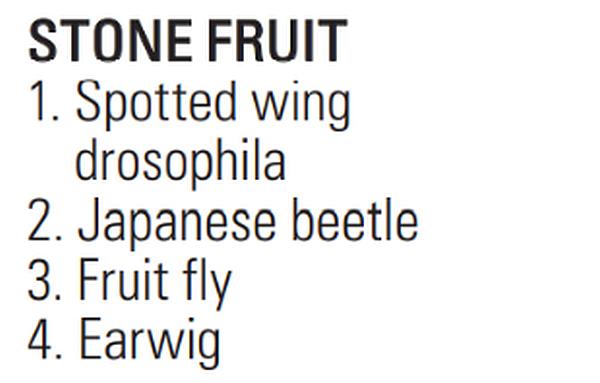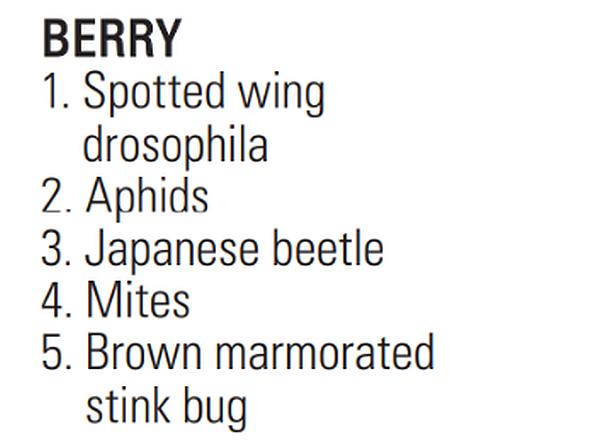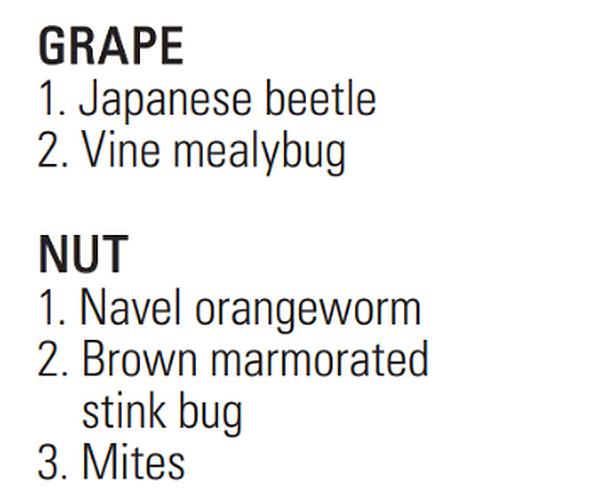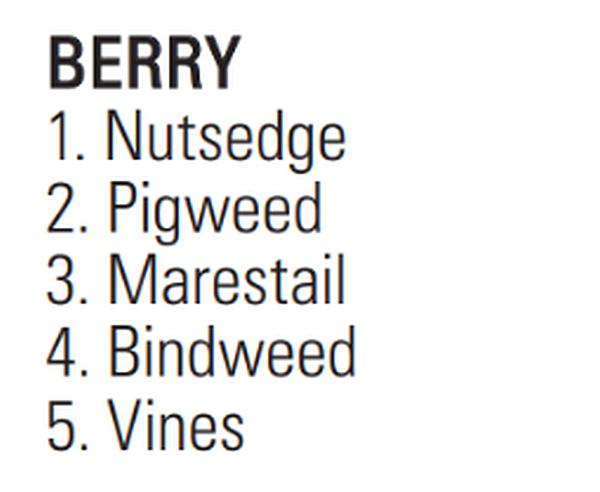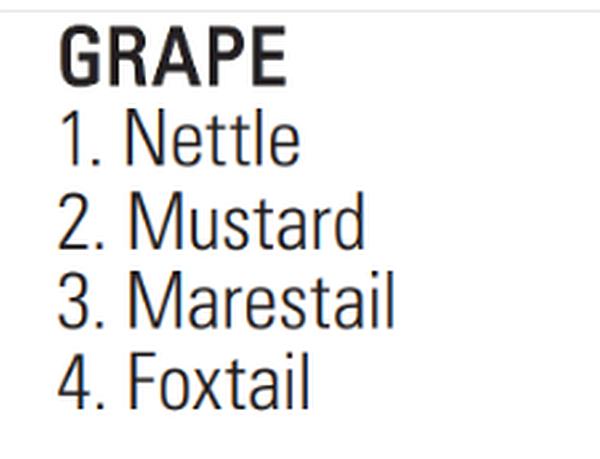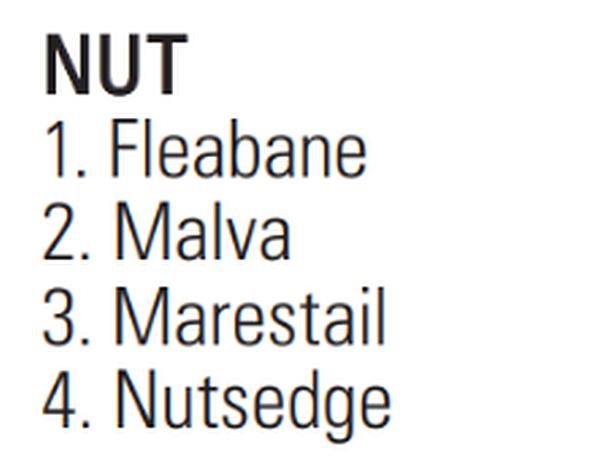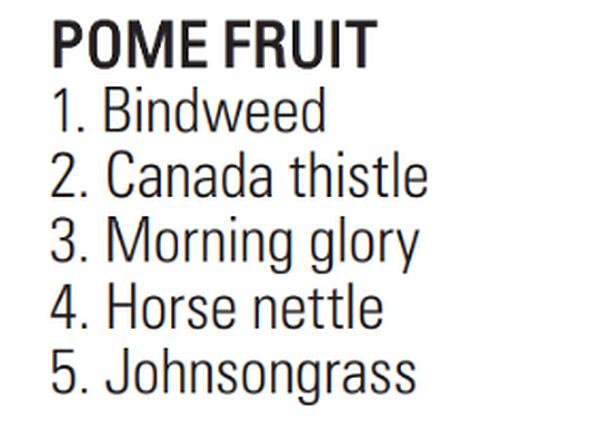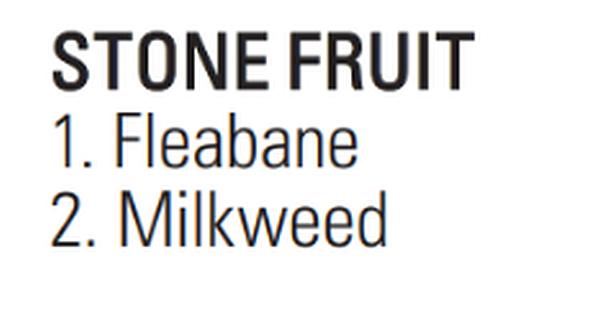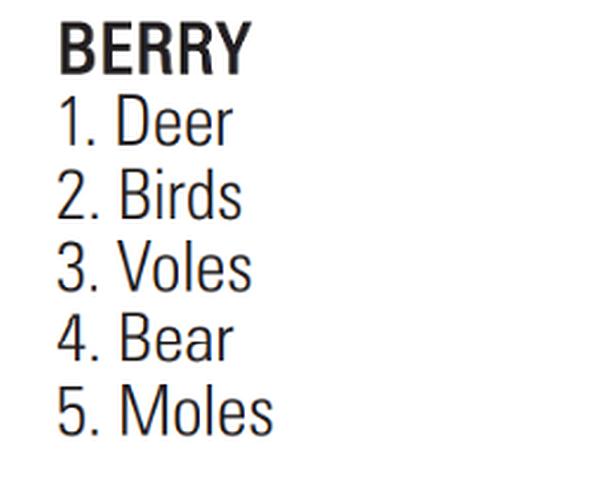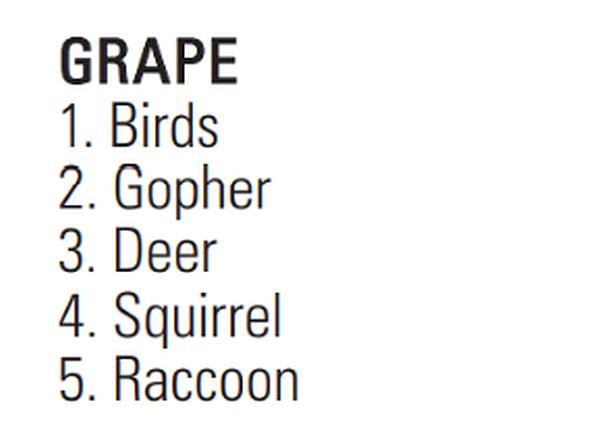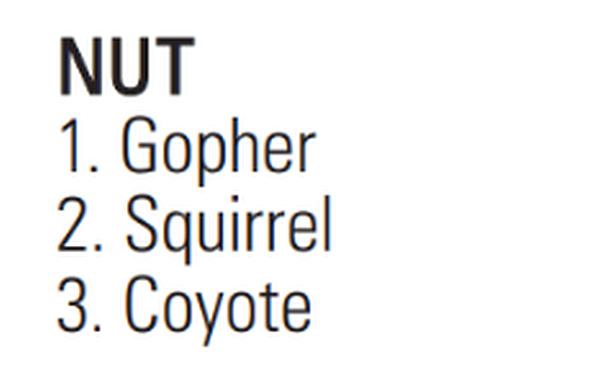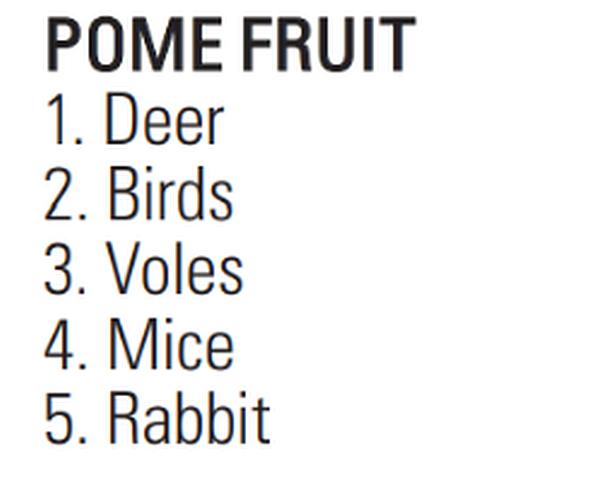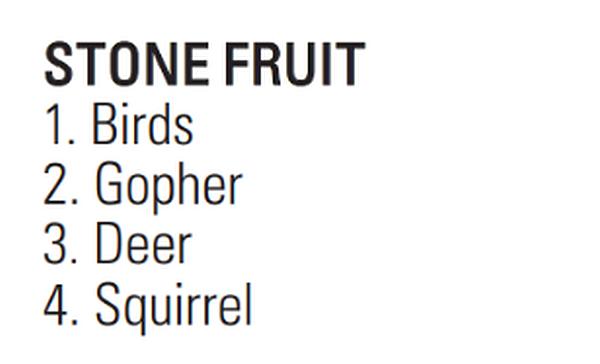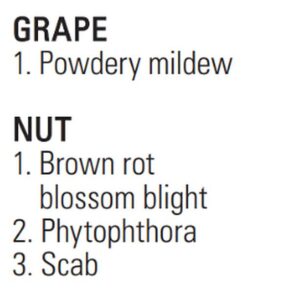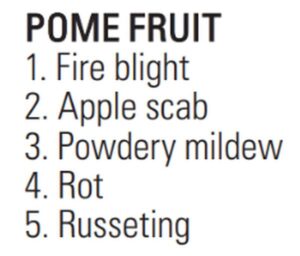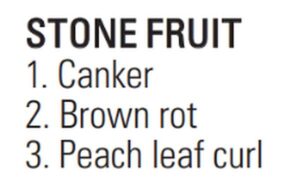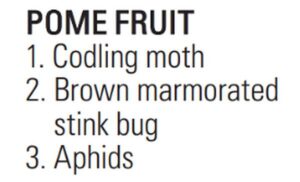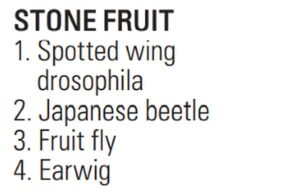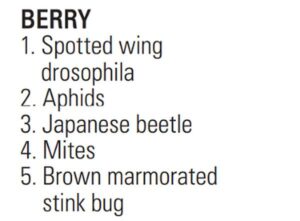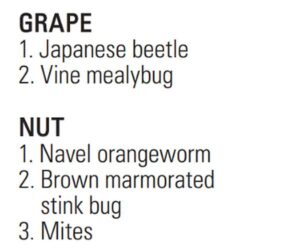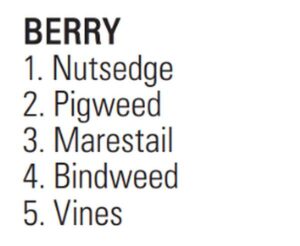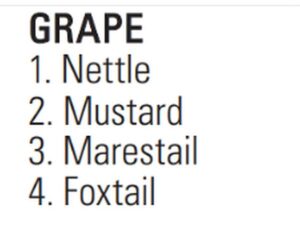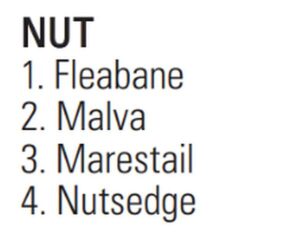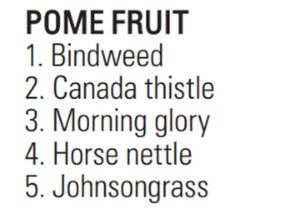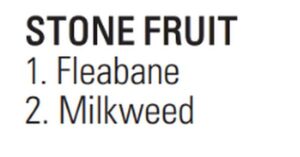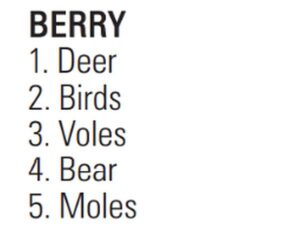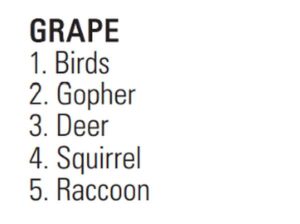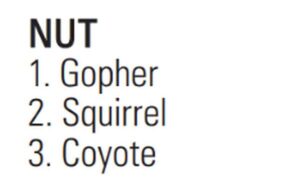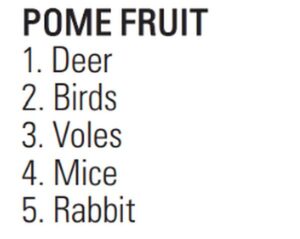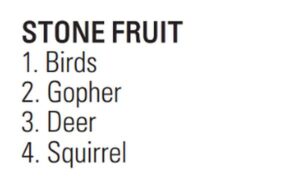The Top Crop Protection Issues Fruit and Nut Growers Are Dealing With Today
With disease, insects, weeds, and wildlife wreaking their usual havoc in 2022, there were bound to be some unique crop protection solutions from respondents to American Fruit Grower’s annual State of the Industry survey. This first one is for the birds … literally.
“We use a robotic mower with a sky puppet attached,” a berry grower from Washington state says. “It’s erratic enough to keep the birds away and keeps grass mowed at the same time. Saves on labor as well.”
Birds upset growers of all types last season. “Stinking starlings,” a grape grower from Oregon says. And about those wax wings, “I spent a lot of money and labor trying to keep them out,” a berry grower in Florida says.
As usual, deer created their share of misery to myriad growers. “I invited hunters during the season and applied a lot of deer repellent,” a berry grower from Louisiana says. “Deer repellant helps but for half the advertised time and not after a rain.”
Cull the deer, echo several growers. More forgiving respondents recommend netting and electric fences.
Disease
When it comes to fire blight, it is the “same as always: chemical protectants and manual removal,” sums up an apple grower from Washington. “Cutting it out and spraying,” a Pennsylvania grower says. “Lots of extra spraying,” a peer from New York state clarifies.
“We tried to follow the weather models and use the appropriate materials at the appropriate times, but we missed a few sprays,” a Maine apple grower says. “We had to cut a lot of shoot blight, and we took out a row of ‘Galas’, which are very susceptible.”
For an apple grower in Michigan, eliminating fire blight meant trying new and different copper products and Actigard (acibenzolar-s-methyl). For a fellow pome fruit grower in Michigan, “nothing worked.”
Still, the blight fight goes on. “We always protect against fire blight using the latest recommendations from our friends at Penn State Extension and Research and other land grant universities,” a Pennsylvania apple grower says. “Ditto for apple scab and bitter rot. Following the guidance from current research, we have been successful at keeping these problems at bay.”
An apple grower in California says powdery mildew (PM) is “always our biggest issue. We treat with several conventional fungicides.” PM late in the growing season forced a Missouri grape grower to “push harvest ahead a few days to prevent infection of grape clusters.”
Insects
While 2022 was an “easy bug year,” according to a California grower of stone fruit, others would disagree. A berry grower from Indiana “could hardly get a handle” on spotted wing drosophila (SWD) and brown marmorated stink bug.
Mentions of SWD are prevalent by survey respondents. A berry grower in Maine used traps to determine the threshold for the insect. In Hawaii a berry grower found greenhouse control via trapping and sanitation. A Kentucky berry grower fought back by buying a new air blast sprayer. With organic sprays limited for SWD, “the best we could do was to rotate the products,” a berry grower in Michigan says. IPM control with an insecticide was the way to go, a Pennsylvania berry grower adds.
A stone fruit grower in California used insect growth regulators to fight oriental fruit moth and peach twig borer. On the codling moth front, another California stone fruit grower relied on a solar-powered bug zapper in the orchard. He worried less than usual about peach leaf curl last year in light of drought conditions.
The season was less kind to a grower in Washington. “Botrytis and molds took my entire harvest of ‘Vanessa’ and ‘Interlaken’ grapes. A Concord ‘Lynden Blue’ diminished in productivity. I cried a lot.”
Weeds
Growers of berries, grapes, and nuts all battled marestail in 2022. Other prevalent weeds were bindweed, fleabane, and nutsedge. For many such farmers, finding a suitable replacement for glyphosate has been a “big issue” for transitioning and organic growers, a California apple grower says.
Overall, many will remember 2022 for the continued loss of “our most effective crop protection materials,” according to a Michigan apple grower. Meanwhile, the available pesticides keep rising in cost. “Our only issues were the dramatic cost increases on spray materials in general,” a New York apple grower says.
Scroll the slideshow above for the top pest issues broken out by crop, based on responses to American Fruit Grower’s 2023 State of the Industry survey.





